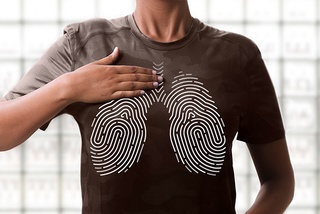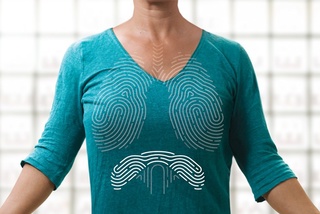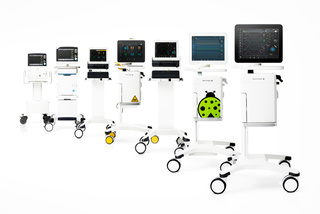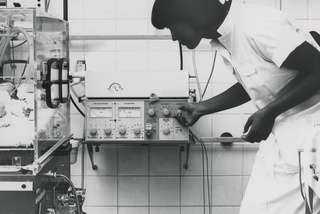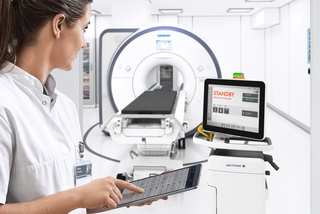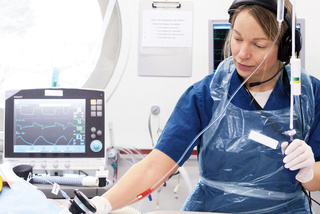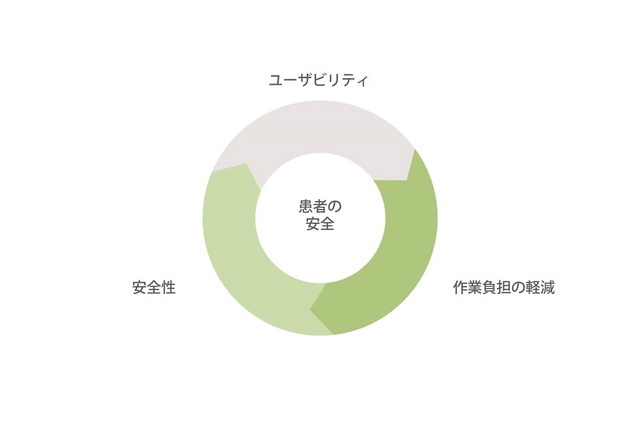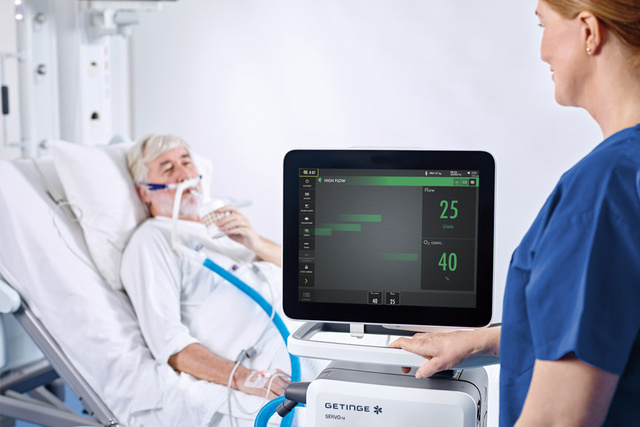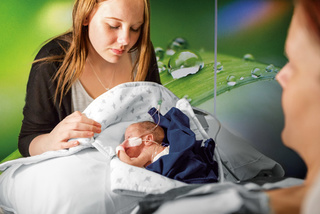-
1. Plinio P. Morita, Peter B. Weinstein, Christopher J. Flewwelling, Carleene A. Bañez, Tabitha A. Chiu, Mario Iannuzzi, Aastha H. Patel, Ashleigh P. Shier and Joseph A. Cafazzo. The usability of ventilators: a comparative evaluation of use safety and user experience. Critical Care201620:263.
-
2. Emeriaud G, et al. Evolution of inspiratory diaphragm activity in children over the course of the PICU stay. Intensive Care Med. 2014 Nov;40(11):1718-26.
-
3. Bellani G, Pesenti A. Assessing effort and work of breathing. Curr Opin Crit Care. 2014 Jun;20(3):352-8.
-
4. Barwing J, et al. Electrical activity of the diaphragm (EAdi) as a monitoring parameter in difficult weaning from respirator: a pilot study. Crit Care. 2013 Aug 28;17(4):R182.
-
5. Goligher EC1, Ferguson ND2, Brochard LJ3. Clinical challenges in mechanical ventilation. Lancet. 2016 Apr 30;387(10030):1856-66.
-
6. Jarr S, et al.Outcomes of and resource consumption by high-cost patients in the intensive care unit. Am J Crit Care. 2002 Sep;11(5):467-73.
-
7. American Thoracic Society; Infectious Diseases Society of America. Guidelines for the management of adults with hospital-acquired, ventilator-associated, and healthcare-associated pneumonia. Am J Respir Crit Care Med. 2005;171(4):388-416.
-
8. Kress JP, Pohlman AS, O’Connor MF, Hall JB. Daily interruption of sedative infusions in critically ill patients undergoing mechanical ventilation. N Engl J Med. 2000;342(20):1471-1477.
-
9. Ely EW, Shintani A, Truman B, et al. Delirium as a predictor of mortality in mechanically ventilated patients in the intensive care unit. JAMA. 2004;291 (14):1753-1762.
-
10. Kress JP, Hall JB. ICU-acquired weakness and recovery from critical illness. N Engl J Med. 2014; 370(17):1626-1635. Slutsky AS. Neuromuscular blocking agents in ARDS. N Engl J Med. 2010;363(12):1176-1180.
-
11. Slutsky AS, Ranieri VM. Ventilator-induced lung injury. N Engl J Med. 2014 Mar 6;370(10):980.
-
12. Ventilation with lower tidal volumes as compared with traditional tidal volumes for acute lung injury and the acute respiratory distress syndrome. The Acute Respiratory Distress Syndrome Network. N Engl J Med. 2000 May 4;342(18):1301-8.
-
13. Amato et al. Driving pressure and survival in the acute respiratory distress syndrome. N Engl J Med. 2015 Feb 19;372(8):747-55.
-
14. Sinderby C, Navalesi P, Beck J, Skrobik Y, Comtois N, Friberg S, Gottfried SB, Lindström L: Neural control of mechanical ventilation in respiratory failure. Nat Med. 1999, 5: 1433-1436. 10.1038/71012.
-
15. Piquilloud L, Vignaux L, Bialais E, Roeseler J, Sottiaux T, Laterre P-F, Jolliet P, Tassaux D: Neurally adjusted ventilatory assist improves patient-ventilator interaction. Intensive Care Med. 2011, 37: 263-271. 10.1007/s00134-010-2052-9.
-
16. Brander L, Sinderby C, Lecomte F, Leong-Poi H, Bell D, Beck J, Tsoporis JN, Vaschetto R, Schultz MJ, Parker TG, Villar J, Zhang H, Slutsky AS: Neurally adjusted ventilatory assist decreases ventilator-induced lung injury and non-pulmonary organ dysfunction in rabbits with acute lung injury. Intensive Care Med. 2009, 35: 1979-1989. 10.1007/s00134-009-1626-x.
-
17. Patroniti N, et al. Respiratory pattern during neurally adjusted ventilatory assist in acute respiratory failure patients. Intensive Care Med. 2012 Feb;38(2):230-9.
-
18. Kim et al. Diaphragm dysfunction (DD) assessed by ultrasonography: influence on weaning from mechanical ventilation. Crit Care Med. 2011 Dec;39(12):2627-30.
-
19. Schepens T, et al. The course of diaphragm atrophy in ventilated patients assessed with ultrasound: a longitudinal cohort study. Crit Care. 2015 Dec 7;19:422.
-
20. Cecchini J, et al. Increased diaphragmatic contribution to inspiratory effort during neutrally adjusted ventilatory assistance versus pressure support: an electromyographic study. Anesthesiology. 2014 Nov;121(5):1028-36.
-
21. Di Mussi R, et al. Impact of prolonged assisted ventilation on diaphragmatic efficiency: NAVA versus PSV. Crit Care. 2016 Jan 5;20(1):1.
-
22. Thille AW, Rodriguez P, Cabello B, Lellouche F, Brochard L. Patient-ventilator asynchrony during mechanical ventilation: prevalence and risk factors. Intensive Care Med 2006;32(10):1515–1522.
-
23. Tobin MJ, etal. Respiratory muscle dysfunction in mechanically ventilated patients. Mol Cell Biochem 1998;179(1-2):87–98.
-
24. Sassoon CS, Foster GT. Patient-ventilator asynchrony. Curr Opin Crit Care 2001;7(1):28–33.
-
25. Blanch L, et al. Asynchronies during mechanical ventilation are associated with mortality. Intensive Care Med. 2015 Apr;41(4):633-41.
-
26. Pohlman MC, et al. Excessive tidal volume from breath stacking during lung-protective ventilation for acute lung injury. Crit Care Med 2008;36(11):3019–3023.
-
27. Colombo D, et al. Efficacy of ventilator waveforms observation in detecting patient–ventilator asynchrony. Crit Care Med. 2011 Nov;39(11):2452-7.
-
28. de la Oliva, Schuffelmann C, Gomez-Zamora A, Vilar J, Kacmarek RM. Asynchrony, neural drive, ventilatory variability and COMFORT: NAVA vs pressure support in pediatric patients. A nonrandomized cross-over trial. Int Care med. Epub ahead of print April 6 2012.
-
29. Beck J, Reilly M, Grasselli G, Mirabella L, Slutsky AS, Dunn MS, Sinderby C. Patient-ventilator interaction during neurally adjusted ventilator assist in very low birth weight infants. Pediatr Res. 2009 Jun;65(6):663-8.

